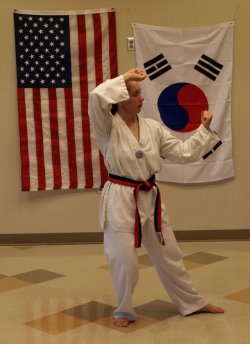Earl Weiss
Senior Master
- Joined
- Jan 27, 2009
- Messages
- 3,584
- Reaction score
- 929
If we're going to go back several generations of forms, we might as well just ignore Karate and go back to the Kung Fu forms. We'll get just about as good an answer out of those than we will out of the Kata that are a few arrangements behind the Poomse.
.
Very true. General Choi references the Shorin and Shri systems as being the roots, and Shorin was the Okiawin erivation of Shorei. The book "Bubishi" Bible of Karate, is manly focused on Chinese origins.



